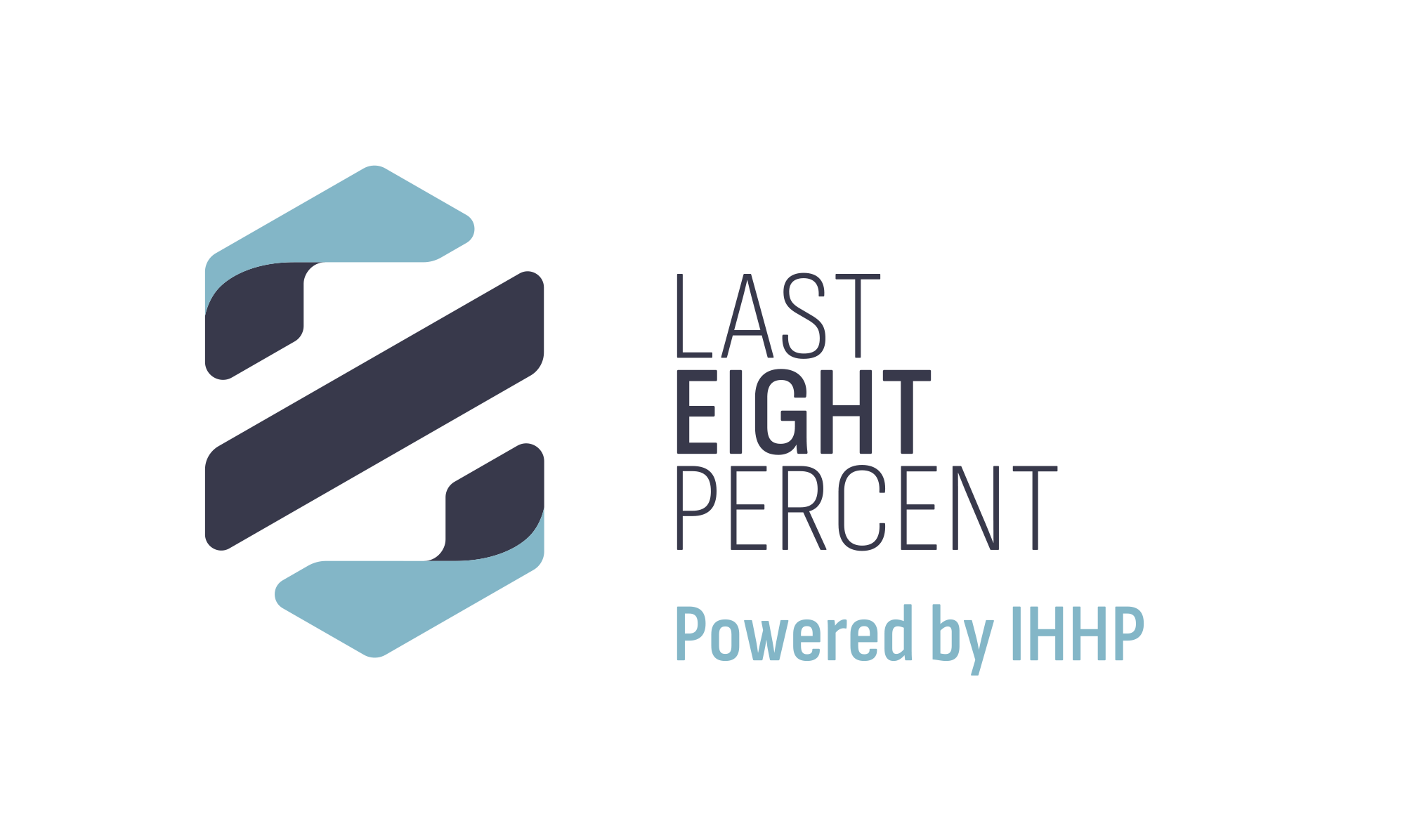Emotional Intelligence has quickly become one of the most important skills for the decade. If you’re considering investing in training, you may have questions about the content, experience, and outcomes.
We sat down with IHHP Facilitator and Subject Matter Expert, Gates Cooney, to get to know her experience in the classroom and how she’s seen the training change people’s lives.
What is your favorite Emotional Intelligence concept to teach?
I would say that the brain science is the concept that had the most significant impact on me personally. It’s the one I love teaching because I see how it resonates with learners.
Most of us experience some level of pressure and stress in our work and personal lives. These situations sometimes cause emotions to run high, making it difficult for us to be at our best. Although I had heard of the “fight, flight, freeze” response before taking and teaching the course, I never truly understood how my emotional responses were impacting my relationships, my career, and my ability to truly engage in my work. This is where self-awareness can make a difference. You can learn more about the science behind these emotional responses at our live online program.
Emotional intelligence is understanding how emotions impact behaviour, which in turn impacts others around you. By understanding the brain science and by doing the exercises in the course, learners explore and identify relationships and situations that “throw them off”. Due to this increased awareness and the strategies and tools we teach, learners have a path to exceptional leadership.
It is so rewarding to see attendees start to apply the science almost instantly during the training. It is not unusual on the second day of the course for participants to share stories about how they applied the science in their interactions with their families the night before. You’ve gotta love that!
What key concepts do you find resonate the most?
At the beginning of the course, we ask learners “what would make this course worthwhile for you?” Time and again, I hear “I’m looking for strategies to deal with difficult co-workers or employees”.
The concept of emotional connection is one that resonates strongly.
We don’t always get to pick who we work with and not every working relationship is smooth and easy. Those difficult relationships can weigh heavily on us and take up a lot of our time and energy, making it difficult for us to be productive.
Sometimes, we are required to have difficult conversations in the workplace. Most of us tend to avoid having those tough discussions for fear we will hurt someone’s feelings or make matters worse. So, what do we do? We avoid having them. We let things fester OR we have conversations that skirt around the issues; that don’t address the “real” problem. As a result, nothing changes. Learn about the three types of conversations and how to have them.
The model and strategies that we teach for emotionally connecting with others are not obvious or necessarily natural. They require a paradigm shift in how we approach relationships.
Learners get a chance to practice applying the model and the strategies in class. This is where they start to see that these methods work to create an environment where both parties can feel heard, understood, valued, and respected. That clears the way for achieving positive and lasting change. This part of the course is a game changer. It’s a new path to promoting engagement, improving morale, and increasing productivity.
The concept of “intentions vs impact” often generates an “A-ha” moment for participants too.
Our lives are busy and our “to do” lists are long, the pressure and stress created by our busy lifestyles can cause us to act in ways that are out of alignment with our good intentions. Let’s face it, we don’t consciously choose to act in ways that hurt or upset others, but that doesn’t mean that we don’t do it.
With 360º feedback and exercises designed to increase awareness, participants learn to distinguish their impact from their good intentions and work to identify opportunities where a shift in their approach can garner better results and improve the quality of their relationships, making it easier to engage even the toughest employees.
Emotional intelligence is understanding the impact of your emotions on yourself and others. Once you recognize how your behavior is impacting employees, the project, the business – as an exceptional leader, you’ve got to hold yourself accountable for that impact. Taking responsibility is the catalyst for positive change in us and in others.
What is the impact you have seen in the classroom?
It is not unusual to have several people lined up at the end of the course eager to share what they gained from the training. Whether it is a new insight, a new sense of self-awareness, tools, strategies; most learners leave this course feeling it was a worthwhile use of their time. There is one instance that stands out for me.
I remember a leader who had sixty direct reports. At the first coffee break on Day 1, he approached me to tell me how frustrated he was with his employees. He described them as needy, unmotivated, and non-productive. For two days, he actively participated in the discussions and worked diligently on the exercises. In some of the group discussions, I could tell that his approach and opinions were being challenged by others. At first, he pushed back, but eventually he started to say less and listen more. When we did the “value card” exercise, I saw the light go on in his eyes. What we get from people is a direct reflection of how valued they feel by us.
After the course, when he came to share his “A-ha” moment, he was excited to tell me where he had “missed the mark” and how he could finally understand why his team was not engaged. He was confident that he would be able to turn things around. He knew that he had a tough challenge ahead…..it meant he would have to have some difficult conversations, he’d have to stay out of judgement, he’d have to start to identify what there was to appreciate about his workers. In spite of all that, he couldn’t wait to get back to his team to get started.
As a former public servant, how do you see Emotional Intelligence helping to support leadership?
When I worked as a learning specialist in the Federal Government, I had many conversations with new leaders who were sometimes frustrated. They would talk about being promoted for their technical and scientific knowledge and expressed deep frustration that, as leaders, 80% of their time was spent dealing with people issues.
People are the main asset in the public sector and their actions are the most significant drivers of organizational outcomes.
Having to engage and motivate teams can pose a significant challenge for leaders in the government because:
- Public sector employees struggle to see how their work contributes to the organization’s overall outcomes
- Goals are hard to translate into measurable units
- Public servants are exposed to much more scrutiny than private sector employees
- There tends to be high turnover in the leadership ranks
- Some people are often seen as “not pulling their weight”
- There usually isn’t any opportunity for performance incentives like pay raises or other perks
- Strong union environments
- …the list goes on and on.
There’s no silver bullet for dealing with these issues or for improving engagement. However, emotionally intelligent leaders are armed to make a significant difference when dealing with these challenges. Emotional intelligence competencies equip public sector leaders and their employees to better handle the challenges of working in a bureaucratic environment.
Public sector leaders leave Emotional Intelligence training with a heightened awareness, tools and strategies to help them successfully coach others, to better manage stress, to deliver feedback, and to collaborate with others. By applying what they learn, they are empowered to effectively connect in a way that helps their team feel valued.
What I love about this training is that it provides leaders and employees with a language they can use to communicate more effectively – a language they can use to better express their needs and to understand the needs of others.
Make no mistake, this is a journey. It’s a journey where you improve over time.
I was able to see firsthand the difference this training made in the public sector. Year after year, leaders and employees would stop me in the halls to share how powerful the concepts in this course were for helping them drive real behaviour change.
What is unique about an open enrolment classroom?
I’ve delivered this training to intact groups and that works very well. However, coming to an open enrolment class allows individuals to relax, to be in a safe environment where they can be honest with themselves and others without feeling that it will impact their careers. It’s an opportunity to exchange ideas and to learn from others.
In addition, it’s an opportunity to get away from the day-to-day challenges; to fully immerse yourself in developing skills that can make a significant difference in your effectiveness. Emotional Intelligence training is a gift leaders can give themselves. I’m told time and time again that this course is worth it on so many levels.
Overall, I have been teaching this course for over ten years and I never cease to marvel at the way participants respond to the material. I have a passion for making a difference. The concepts in this training make a difference in a way that I have not seen before. I am so grateful to have the opportunity to share these valuable tools with learners.

About Gates Cooney
Gates Cooney, Facilitator at IHHP. A two-time nominee for the Michelle Comeau Human Resources Leadership Award with over twenty years of experience as a learning specialist and facilitator, Gates is an open-minded lover of learning whose drive is to inspire others to reach their full potential. Click here to learn more about Gates.

